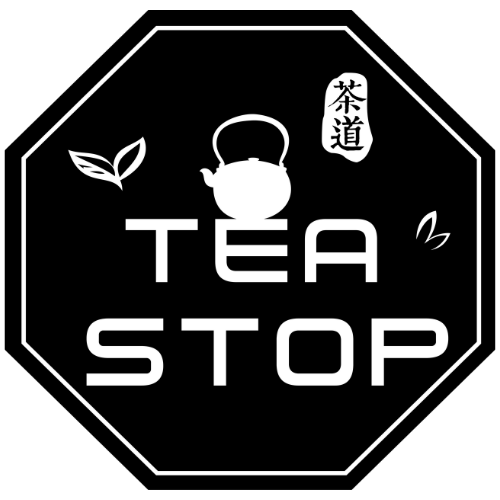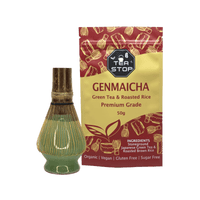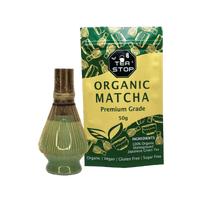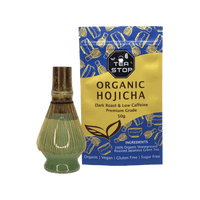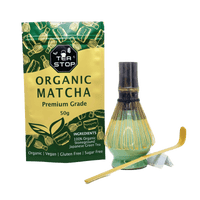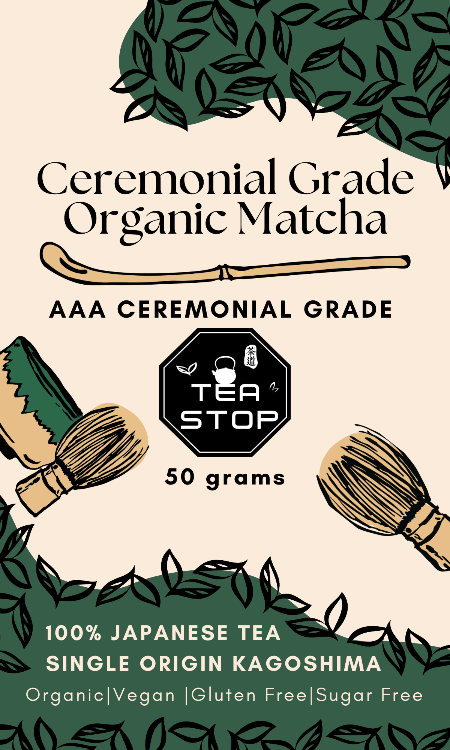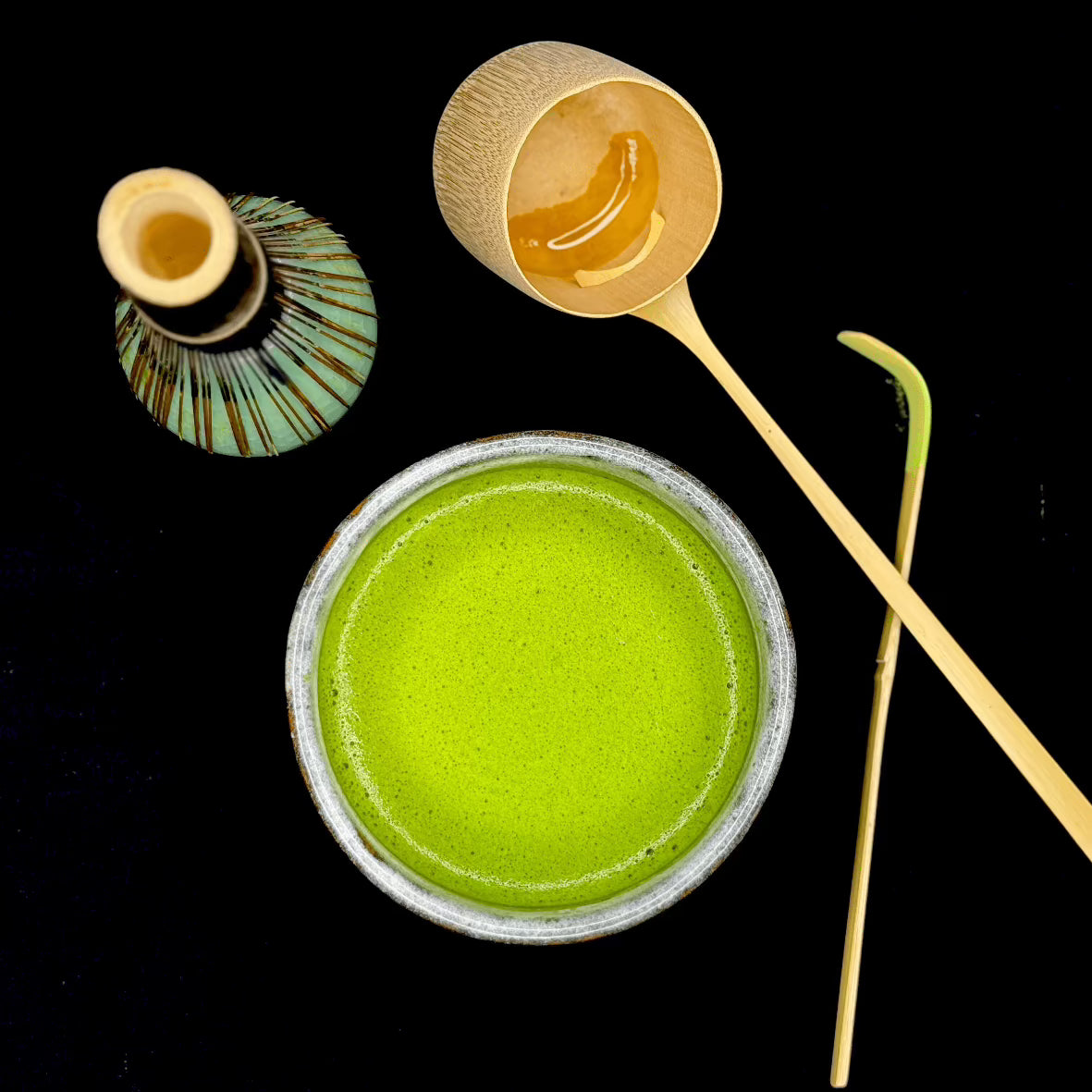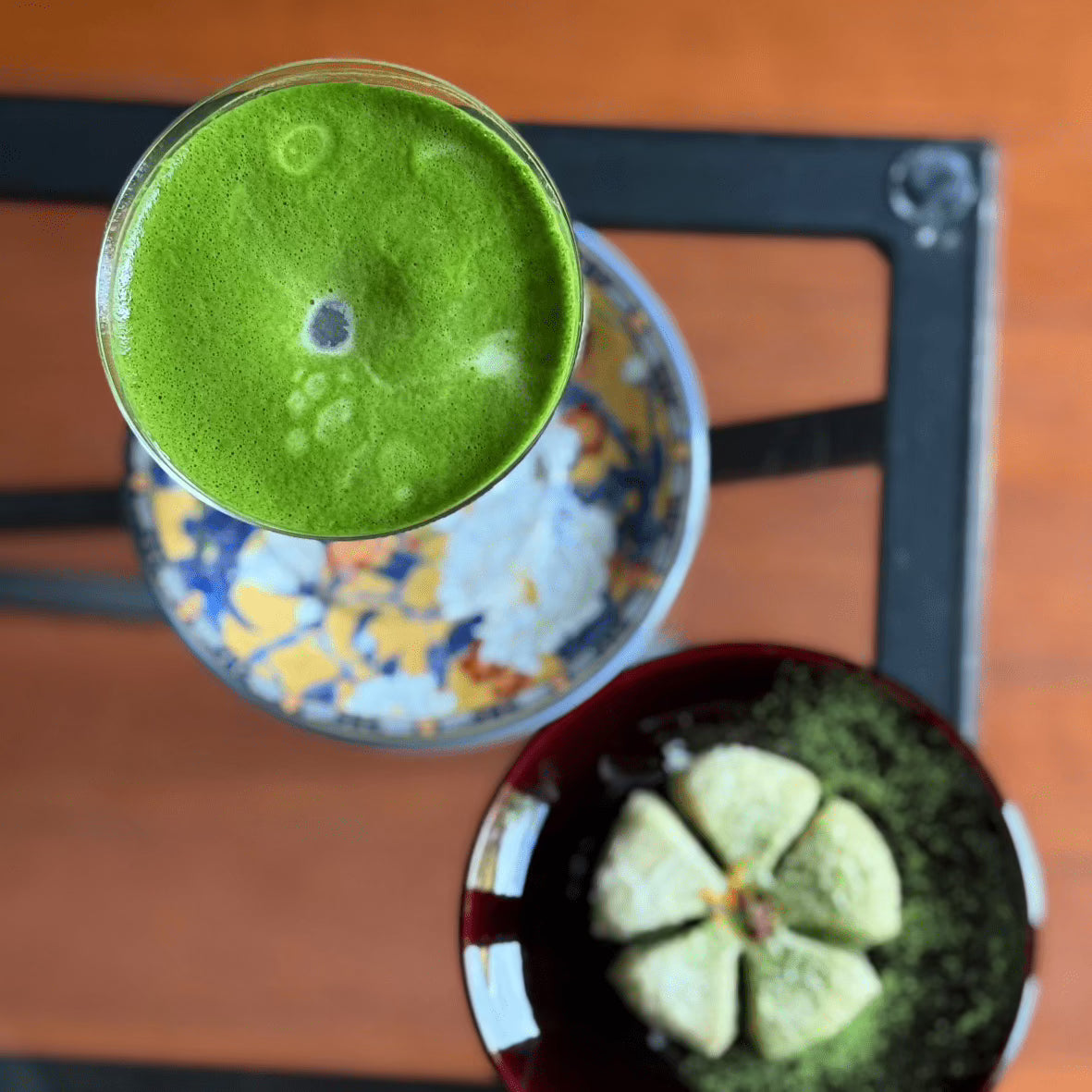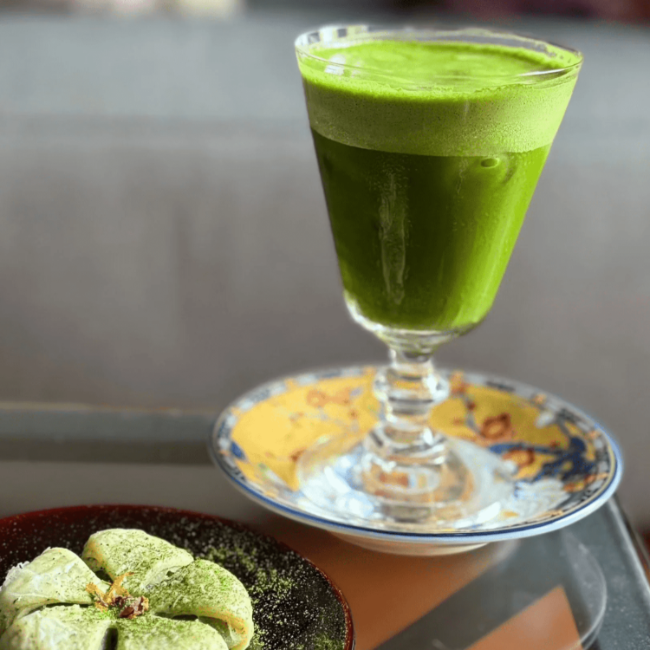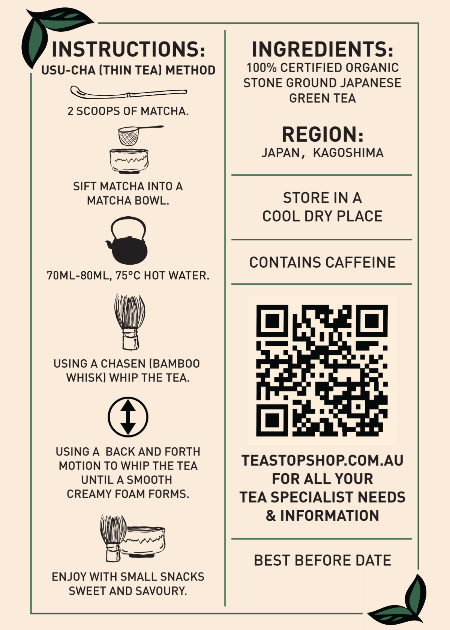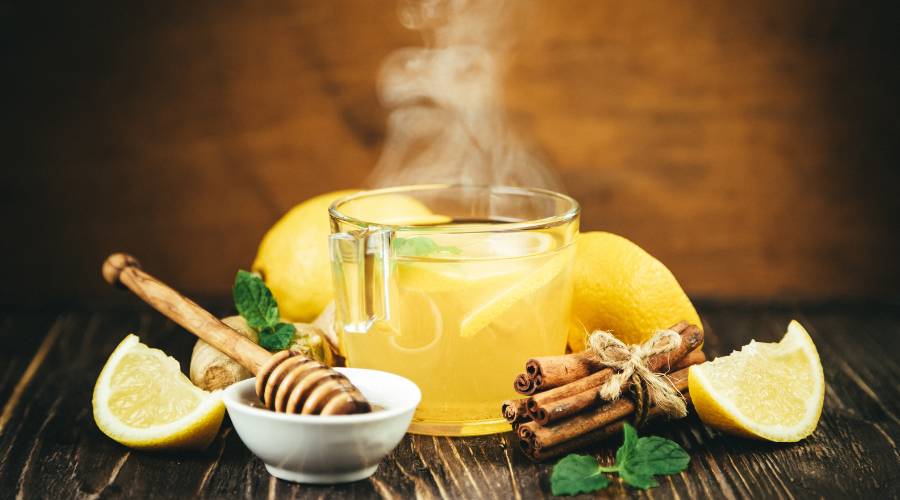
Seasonal Tea Recipes: Iced & Warm Brews
Share
Seasonal tea recipes offer an exciting journey through flavors that align with the changing seasons. From refreshing iced tea recipes perfect for summer to comforting warm tea recipes ideal for winter, these homemade tea concoctions can enhance any occasion. Seasonal teas not only delight your taste buds but also offer a way to enjoy nature's bounty year-round.
Engaging in both iced and warm brews allows for a diverse range of flavors and experiences. Iced tea recipes bring cool relief on hot days, often incorporating fresh fruits and herbs to capture the essence of summer. On cooler days, warm tea recipes provide a cozy embrace, with rich blends that evoke warmth and comfort.
For those seeking a superior tea experience, consider using premium organic loose leaf tea from Tea Stop Shop. This Australian-owned brand specializes in high-quality, organic teas sourced from the world's best gardens. Their offerings promise unmatched flavor and aroma, elevating any homemade tea recipe into something truly special. Switching to loose leaf not only enhances taste but also ensures you are sipping on a brew that's packed with more nutrients and aroma compared to traditional bagged options.

Iced Tea Recipes
Cold Brewed Iced Tea
Crafting the perfect fruit iced tea begins with understanding the art of cold brewing. This method involves steeping tea leaves in cold water for an extended period, typically 6-12 hours, at room temperature or in the fridge. Using mason jars can add a rustic charm to your brewing process and makes it easy to store and serve your iced tea.
Method for Cold Brewing
- Choose Your Tea: Opt for premium organic loose leaf teas from Tea Stop Shop for unmatched flavor.
- Measure Correctly: Use about 1 teaspoon of loose leaf tea per cup of water.
- Steep with Patience: Combine water and tea leaves in a jar, seal it, and let it brew slowly in the refrigerator.
- Strain and Serve: After steeping, strain the tea leaves and enjoy your refreshing drink.
Benefits of Less Acidity and Bitterness
Cold brewed tea offers a smoother taste profile due to reduced extraction of tannins and acidity compared to hot brewed methods. This means that even those sensitive to bitterness can enjoy a cup without additional sweeteners.
Enhancing Flavors with Fresh Fruits and Sweeteners
Elevate your cold brewed tea by adding fresh fruits like berries, citrus slices, or peaches. These not only infuse natural sweetness but also create vibrant flavors that are perfect for entertaining drinks. Consider these combinations:
- Citrus Delight: Add slices of lemon or orange for a zesty kick.
- Berry Fusion: Mix in blueberries or strawberries for a summer twist.
- Peach Paradise: Fresh peach slices blend beautifully with black or green teas.
For those who prefer a hint of sweetness, natural sweeteners like honey or agave syrup can complement the fruity notes without overpowering them.
Incorporating these elements into your iced tea routine transforms simple beverages into delightful experiences. The flexibility of cold brewing allows you to experiment with flavors, creating personalized drinks that cater to your palate while enjoying the benefits of less acidity and bitterness.
Spiced Ginger Pear Iced Black Tea
Crafting a Spiced Ginger Pear Iced Black Tea brings together the robust infusion of black tea with the aromatic depth of cinnamon and ginger. Start by preparing a cold brewed tea, allowing black tea leaves to steep in cold water for an extended period, achieving a smooth flavor with reduced bitterness.
Ingredients:
- 4 cups cold brewed black tea
- 1 ripe pear, thinly sliced
- 1-inch piece of fresh ginger, peeled and sliced
- 1 cinnamon stick
- Honey or sweetener to taste
Method:
- Combine the cold brewed tea with pear slices, ginger, and a cinnamon stick in a large pitcher.
- Let the mixture sit at room temperature for an hour, infusing flavors deeply.
- Sweeten as desired.
The visual appeal of this fruit iced tea makes it ideal for entertaining drinks at holiday gatherings or summer parties. Serving in mason jars adds a rustic charm, enhancing both presentation and experience. This spiced iced tea not only captivates with its rich black tea infusion but also offers a refreshing twist perfect for any occasion.
Sparkling Pink Grapefruit Pom Green Tea
Creating a sparkling pink grapefruit pom green tea combines the refreshing qualities of fruit iced tea with the elegance of entertaining drinks. The key ingredients include:
- Cold brewed green tea (room temperature brewing for a smooth flavor)
- Freshly squeezed grapefruit juice
- Pomegranate seeds
- A touch of honey for sweetness
- Sparkling water for fizz
Start by brewing the green tea at room temperature to preserve its smooth flavor. Once brewed, mix in grapefruit juice and honey, stirring until the honey dissolves. Add pomegranate seeds to enhance visual appeal and infuse additional flavor.
For serving, consider using mason jars to present this sparkling iced tea. Not only do they add a rustic charm, but they also keep your drink chilled longer. Fill each jar with ice, pour the green tea mixture, and top with sparkling water. Enjoy a refreshing drink that perfectly balances tartness and sweetness.

Warm Tea Recipes
Sun Brewing Method
Sun brewing is a unique technique that captures the essence of summer. By using the sun's natural warmth, you can create a tea with a light and refreshing flavor. The method is simple:
- Fill a large jar with cold water and add loose leaf tea.
- Seal the jar and place it in direct sunlight for 3 to 5 hours.
This gentle process results in a milder taste, making it an ideal choice for those who prefer a softer beverage. Sun brewed tea is perfect as a daytime drink, offering both hydration and flavor without overpowering the senses.
Best Practices for Making Sun Tea at Home
To ensure the best results when making sun tea at home:
- Use high-quality, organic loose leaf tea from trusted sources like Tea Stop Shop to maximize flavor and aroma.
- Choose a large glass jar with a tight-fitting lid to prevent contamination.
- Monitor brewing times carefully to avoid bitterness; typically, 3 to 5 hours is optimal.
- Refrigerate immediately after brewing to maintain freshness and prevent bacterial growth.
Traditional Warm Brews
Classic warm teas hold a special place in many cultures. Among them, Southern Sweet Tea stands out as a beloved staple. This sweetened black tea is traditionally served hot, though it can also be enjoyed chilled. The choice between hot and cold versions depends on personal preference and occasion. Hot Southern Sweet Tea offers comforting warmth during cooler months, while its iced counterpart provides refreshment on hot days.
Other traditional warm brews worth exploring include:
- Earl Grey: Infused with bergamot oil for a citrusy aroma.
- Masala Chai: A spiced blend featuring cardamom, cinnamon, ginger, and cloves.
These teas offer diverse flavors, catering to various tastes. Whether you prefer the richness of Earl Grey or the spiciness of Masala Chai, traditional warm brews provide endless possibilities for enjoyment.
Exploring these methods and recipes allows you to enjoy the rich diversity of warm teas. Each cup can transport you to different cultures and climates, enriching your daily routine with variety and depth.
Best Practices for Brewing
Brewing Temperature Recommendations
Understanding the ideal brewing temperature is crucial to unlocking the full potential of your tea. Each type of tea has its optimal temperature range, which plays a significant role in determining its flavor and aroma.
1. Green and White Teas
Brew these delicate teas at a lower temperature, ideally between 70-80°C. This gentle heat preserves the subtle notes and complex aromas characteristic of green and white teas. Too much heat can result in a bitter taste, overshadowing their naturally refreshing qualities.
2. Black and Herbal Teas
These robust teas require a higher brewing temperature, around 90-100°C. The increased heat helps to release the bold flavors and rich aroma inherent in black and herbal teas. Proper temperature ensures that the full-bodied essence is captured without becoming overly astringent.
Effects on Flavor and Aroma
The right brewing temperature not only affects the taste but also enhances the aromatic profile of your tea. When brewed correctly:
- Green/White Teas: Expect a light, floral fragrance with sweet undertones. The mild temperatures accentuate their delicate flavors without causing bitterness.
- Black/Herbal Teas: Anticipate an intense, fragrant aroma with deeper flavor notes. The higher temperatures bring out the richness and complexity typical of these varieties.
Cold Brew Methods
For those seeking a smoother taste, cold brewing offers an excellent alternative. This method reduces acidity and bitterness, resulting in a refreshingly smooth cup:
- Use suitable teas like green or fruity blends for cold brews.
- Steep in cold water for 6-12 hours depending on your preference for flavor intensity.
- Enjoy less acidic results with more pronounced natural sweetness.
Cold brew methods allow you to explore different dimensions of tea flavors while maintaining their unique characteristics. Ideal steeping times vary based on the tea type and personal taste preferences, encouraging experimentation to discover new favorites.
Explore these best practices to elevate your home brewing experience, ensuring each cup is both flavorful and aromatic.
Reusable Loose Leaf Teas
Reusing loose leaf teas presents a sustainable approach to tea brewing, allowing you to enjoy multiple brews from the same leaves. Typically, oolong and green teas are better suited for reuse, retaining their flavor and aroma across 2-3 infusions.
The ideal method involves adjusting the steeping times and temperatures accordingly:
- Green/White Teas: Optimal at 70–80°C.
- Black/Herbal Teas: Best brewed between 90–100°C.
For cold brewing, which enhances sweet and subtle notes, use approximately one tablespoon of loose leaf tea per quart of water. Suitable teas for this method include white, green, and oolong varieties. Steeping time plays a crucial role in extracting flavors without bitterness, emphasizing loose leaf sustainability in your tea recipes.
Conclusion
Enjoying tea recipes throughout the year adds joy to your daily routine. Enhance this experience with top-notch organic loose leaf choices from Tea Stop Shop. Their range not only provides exceptional taste and fragrance but also guarantees quality in every sip. Trying out these tea recipes turns ordinary moments into a carefully crafted tea adventure, honoring both tradition and creativity. Explore the skill of brewing with Tea Stop Shop's products, where every cup embodies a commitment to superiority and flavor.
FAQs (Frequently Asked Questions)
What are some benefits of using premium organic loose leaf tea?
Using premium organic loose leaf tea enhances the flavor and aroma of your brews, providing a richer and smoother taste experience. Additionally, these teas often have higher quality ingredients and fewer additives, making them a healthier choice.
How can I make cold brewed iced tea at home?
To make cold brewed iced tea, simply steep loose leaf tea in cold water at room temperature for several hours (typically 6-12 hours). This method results in a smoother flavor with less acidity and bitterness. You can enhance it further by adding fresh fruits or sweeteners.
What is the difference between hot and cold versions of sweetened black tea?
The main difference lies in the brewing method and temperature. Hot sweetened black tea is brewed with boiling water, while cold versions are often prepared by brewing at room temperature or through cold brewing methods. This affects the flavor profile, with hot teas having a stronger taste and cold teas offering a smoother, refreshing experience.
What are some popular warm tea recipes for winter?
Popular warm tea recipes for winter include traditional brews like Southern Sweet Tea and spiced ginger pear iced black tea. These recipes often feature warming spices like cinnamon and ginger, perfect for cozy gatherings during the colder months.
What are the ideal brewing temperatures for different types of teas?
Green and white teas should be brewed at 70-80°C (158-176°F), while black and herbal teas benefit from higher temperatures of 90-100°C (194-212°F). Using the correct temperature helps to maximize flavor extraction and aroma.
Can I reuse loose leaf tea leaves for multiple brews?
Yes! Loose leaf teas can generally be reused for 2-3 brews. However, keep in mind that flavor retention may vary depending on the type of tea; oolong and green teas typically retain their flavors better than others after multiple infusions.
